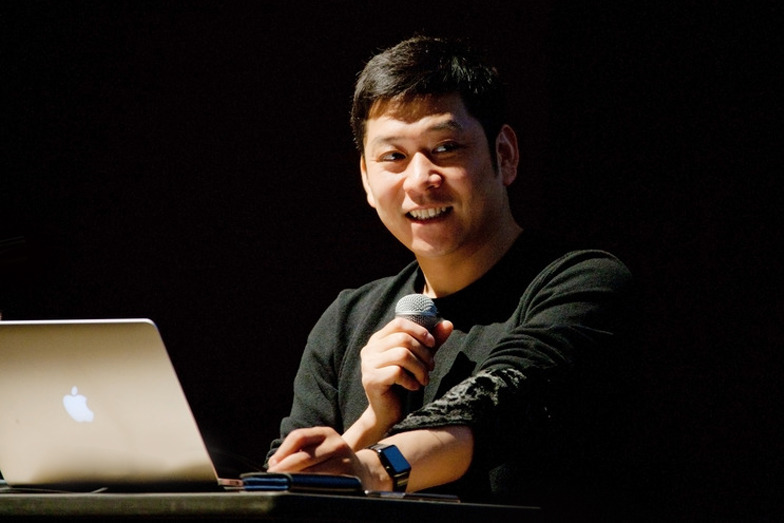Sculptor Kohei Nawa has expanded his creative domain beyond sculpture to include developing materials with diverse textures, engineering with new technologies like 3D printing, directing spatial designs such as architecture, and creating individual artworks. In recent years, a new form of collaboration between business and art, known as "commission work," has begun emerging in Japan, and Nawa is active in this field as well. Art has always been in a state of tension with business, sometimes collaborating, always exchanging stimulation and influence. This time, we bring together three individuals: editor Shigeo Goto, who produces commission work; Mitsufumi Abe of Dentsu Inc., who planned an art project with Nawa for Yaskawa Electric's 100th anniversary; and Nawa himself. Together, they discuss the future of art collaboration. This is the first part of that conversation.
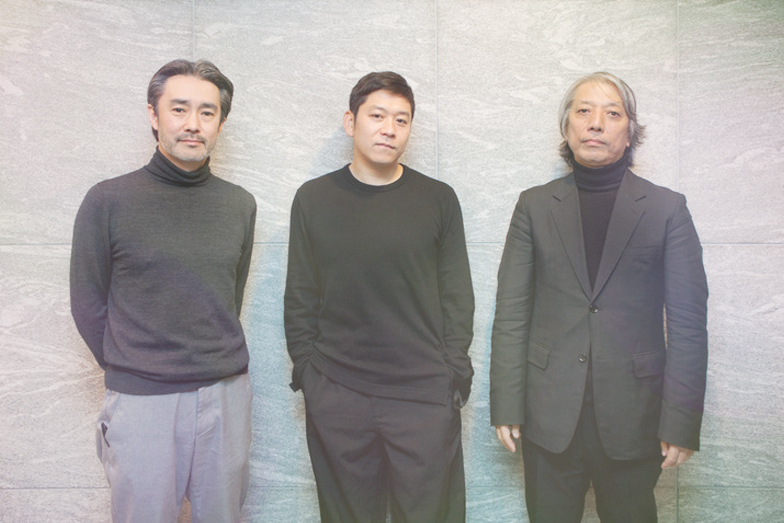
(From left) Mr. Abe, Mr. Nawa, Mr. Goto
The way artists are promoted
has changed drastically.
Abe: In 2015, Yaskawa Electric, celebrating its 100th anniversary, approached us about creating a monument for the public space in their new 100th-anniversary headquarters building. I consulted Shigeo Goto about this, and he introduced me to Kohei Nawa—that was the origin of this talk show. Today's theme is "Commissioning Art," and I hope we can discuss production methods that revolutionize the relationship between corporations and art.
Goto: Around the late 90s, the landscape of contemporary art and collectors changed. This was due to advancing globalization and the revitalization of the contemporary art market. The global contemporary art market is said to be nearly 7 trillion yen in scale. The methods for promoting artists have also changed significantly, shifting from the traditional business model of dealers selling works to licensing businesses and collaborating with companies to develop content. However, in Japan, commercial galleries capable of responding to these changes have not been developed. Therefore, I have been working to create a new system where artists and companies can collaborate in a mutually beneficial way. It's like an art production company, rather than an entertainment agency.
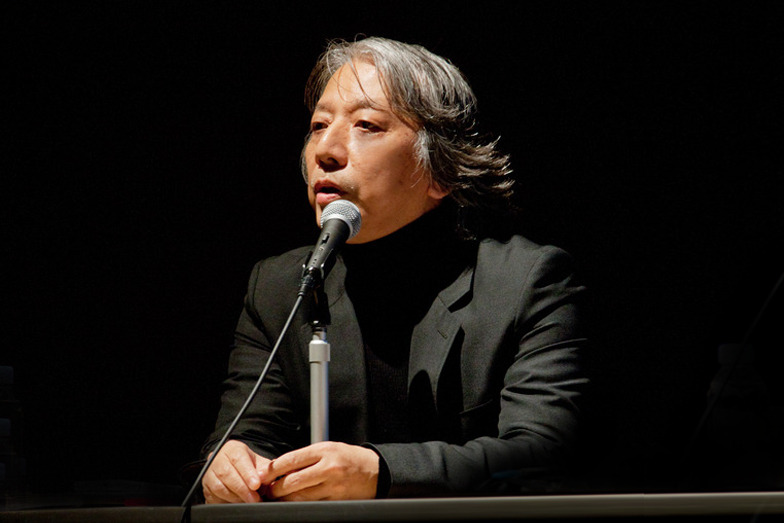
Yaskawa Electric is a globally renowned industrial robotics company. As this firm celebrates its 100th anniversary, it must select artists who will represent Japan for the next century. With this in mind, we cast Mr. Nawa. What's interesting about Mr. Nawa is that he runs his own production company. While artists of the past expanded internationally by transferring to powerful overseas galleries, new artists like Mr. Nawa create their own production companies and collaborate with international galleries for promotion. The relationship between artists and galleries is evolving. Today, Mr. Nawa will present his own work.
Nawa: First, I'd like you to see my work as a sculptor. In March 2015, I held a solo exhibition titled "FORCE" at Sky the Bathhouse in Tokyo, where I made physical force visible. I translate a single sculptural concept into various media: sculpture, painting, drawing, video, stage work, and more. For example, this "Moment" series creates drawings through pendulum motion. I also exhibited the "Direction" series, paintings that visualize gravity. Additionally, I presented a new work titled "Force," where I created a pool of black silicone oil on the floor and circulated it up to a 6-meter-high ceiling. From there, the oil continuously flows down, connected like threads. The silicone oil falling from the ceiling resembles black rain and also feels like information constantly showering down.
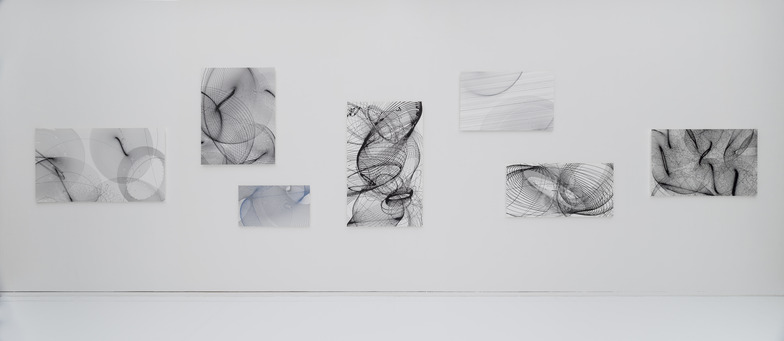
『Moment』
installation view, "mission【SPACE×ART】-beyond cosmologies"
2014/Museum of Contemporary Art Tokyo, Tokyo, 2014
Photo : Nobutada OMOTE | SANDWICH
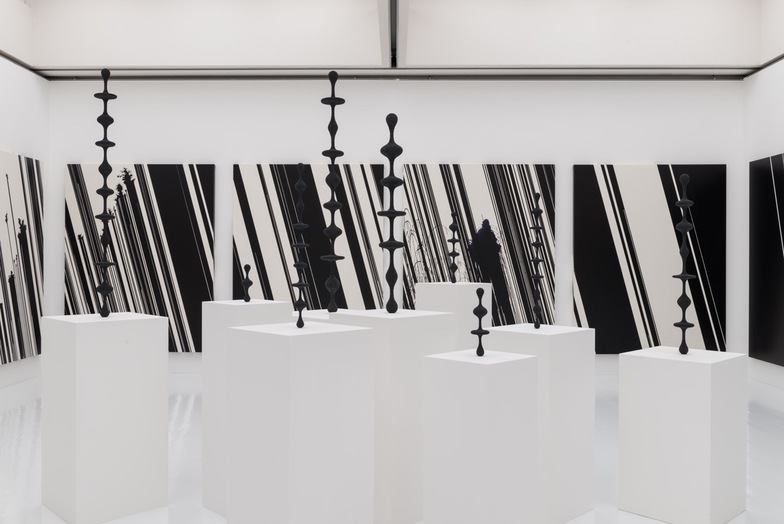
『Direction』
installation view, “mission【SPACE×ART】-beyond cosmologies”
2014/Museum of Contemporary Art Tokyo, Tokyo, 2014
Photo: Nobutada OMOTE | SANDWICH
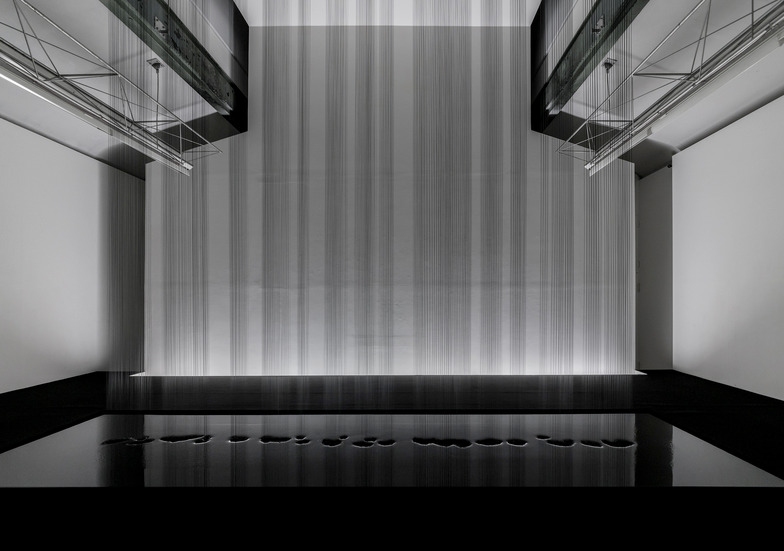
『Force』
2015/courtesy of SCAI THE BATHHOUSE
photo : Nobutada OMOTE | SANDWICH
The "PixCell" series consists of objects collected from the internet, encased within crystal glass spheres of varying sizes. The spheres are lenses. Today, countless media outlets across the globe possess lenses. As a symbol of visual media, PixCell (the cell of imagery) expresses the image of lenses worldwide coming into contact with objects, forming a mass. Objects have become entities visible only through lenses. I continue creating this format because it strikes me as profoundly contemporary.
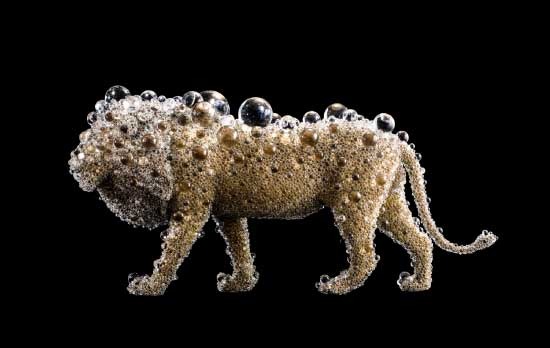
『PixCell-Lion』
2015/collection of Takahashi Collection
courtesy of SCAI THE BATHHOUSE
photo : Nobutada OMOTE | SANDWICH
I believe how contemporary art exists within a space is crucial. I create works while carefully exploring how artworks are balanced within the space and how they feel when light or people enter. Many people think each sculpture is the work itself, but sculpture isn't merely an object. It's actually a material experience, or an experience of thought—sculpture equals experience.
My latest work is the stage production "Vessel," a collaboration with Belgian choreographer Damien Jalet. I was responsible for the stage concept, design, and spatial direction. It's an experimental stage piece using a special material: when performers move intensely on stage, it solidifies into a solid state, but when they stop, it liquefies and sinks continuously.

『Vessel』
2015/photo :Damien Jalet
What is the "Muse" that appeared
What is the "Muse" that appeared?
Nawa: For Yaskawa Electric's entrance, we created "PixCell - Double Muse," a 5-meter-tall piece made in the format of the "PixCell" series.
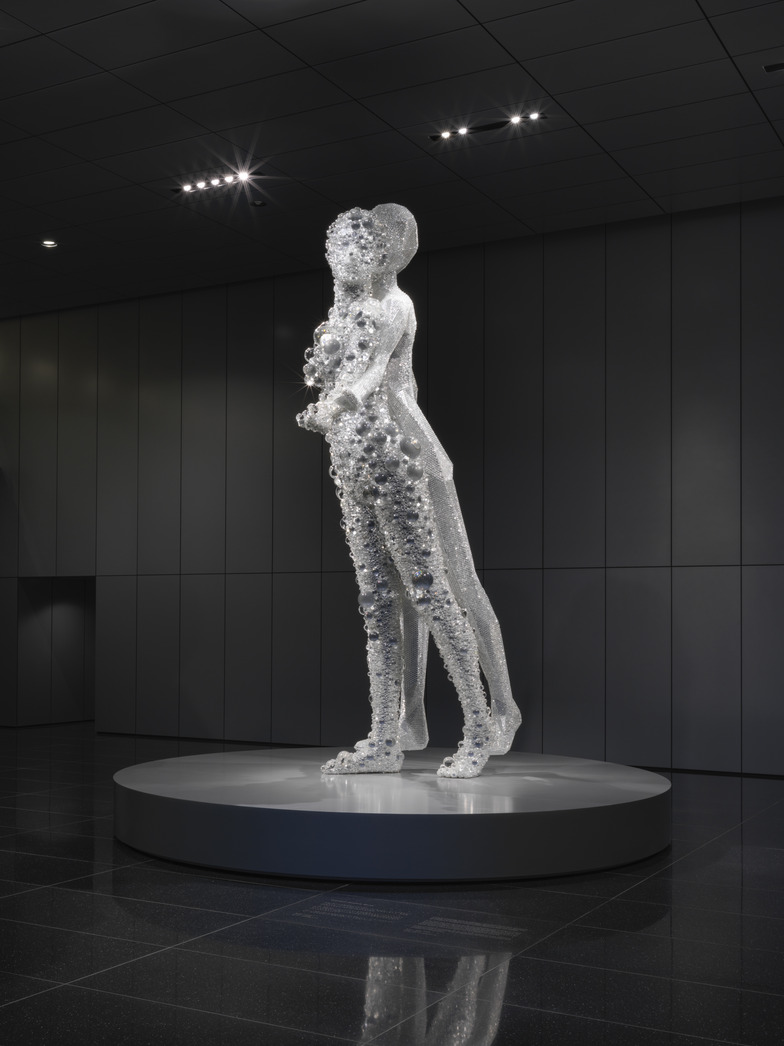
『PixCell - Double Muse』
courtesy of SCAI THE BATHHOUSE
photo : Nobutada OMOTE | SANDWICH
Abe: Could you tell me about the theme of Double Muse?
Nawa: When I toured Yaskawa Electric's factory, I saw robot arms making robot arms identical to themselves. It felt like self-replication, straight out of science fiction. If Yaskawa's self-replicating plants spread worldwide, the world would become overrun with robots. I wanted to know what would happen to the relationship between humans and machines, and between the human body and sensibility, in such a world. That's why I created this work.
Abe: What really stuck with me during the presentation was the simulation using the Oculus Rift. You could enter a building that doesn't exist yet and look around inside it. Yaskawa Electric's President, Junji Tsuda, was genuinely fascinated, saying, "Wow! I see!"
Nawa: Oculus lets you check perspectives in a state very close to reality. We've now made architectural models viewable through Oculus too.
Abe: Could you share some other examples of commissioned work you've done for companies?
Nawa: This is a sculpture called "Manifold" installed in the sculpture garden in front of a department store in Cheonan, South Korea. It took about three years to create, cutting aluminum cast parts based on 3D data modeled using a special tactile device. It looks as if energy is emanating multidimensionally from the center.
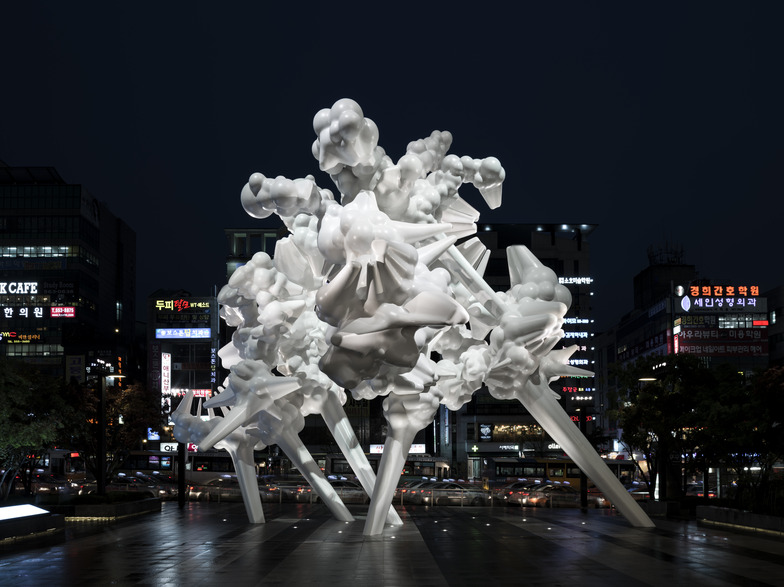
Manifold
2013/collection of ARARIO Corporation
courtesy of ARARIO GALLERY and THE SCAI THE BATHHOUSE
photo : Nobutada OMOTE | SANDWICH
For au's commissioned work, I created an art model where a mobile phone designed by Naoto Fukasawa of iida was engulfed by translucent spherical pixels.
My studio, SANDWICH, has teams for project management, art production, architecture, graphics, and more. We currently have about 80 projects underway. Artists from Japan and abroad, young creators, art students—people of all generations gather here. Around 30 to 40 people work here every day.
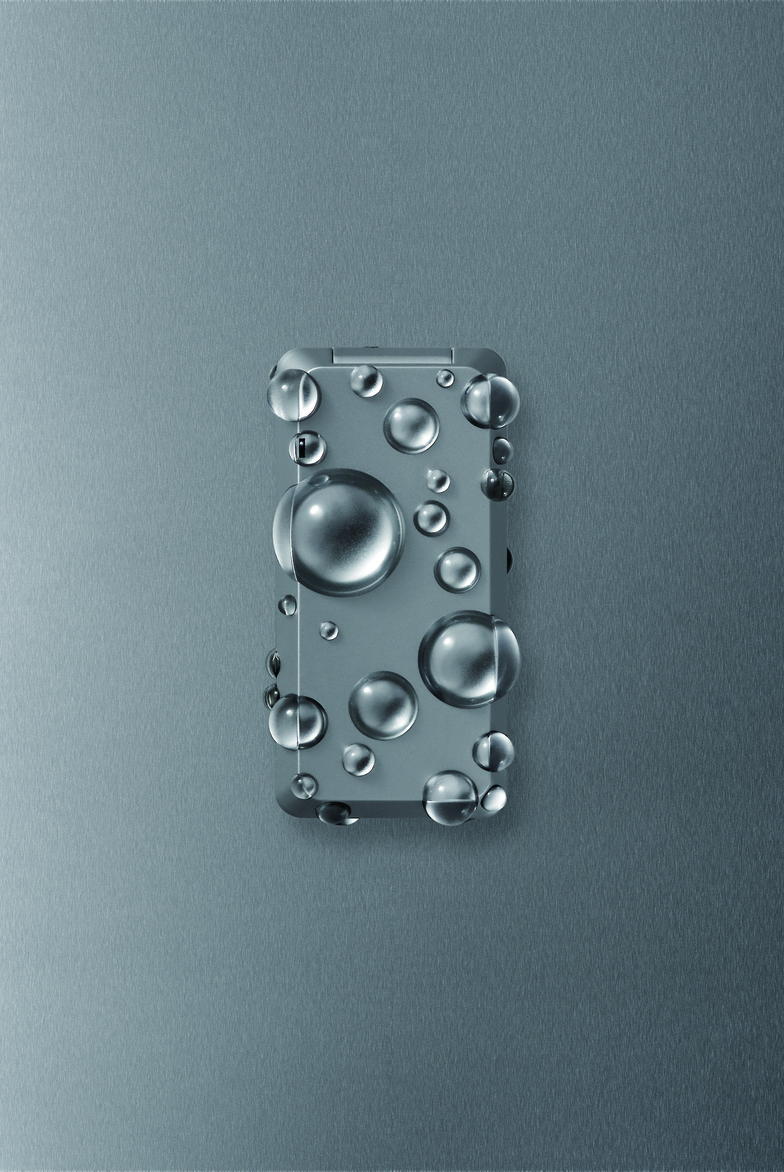
『PixCell via PRISMOID』
photo : Nobutada OMOTE | SANDWICH
Next, I'll introduce work from our architecture team. This is the private residence "KYODO HOUSE" in Setagaya Ward. We collected reclaimed wood and built it based on the concept of the "Direction" series. For the new fashion brand "NEMIKA" in Hiroo, we handled everything from interior design to furniture.
In September, an art pavilion is scheduled to open within the grounds of Shinshoji Temple in Hiroshima City. A roof approximately 50 meters wide floats like a ship, with a garden beneath it. Inside the "ship," a water surface evokes the image of a vast ocean expanse, with gentle waves lapping in. We are creating an installation to view the light reflected there. For this project, we conceived everything together—the artwork and architecture—from the initial concept through to the design.
You can also read the interview here on AdTie!
Planning & Production: Aki Kanahara, Dentsu Inc. Event & Space Design Bureau









